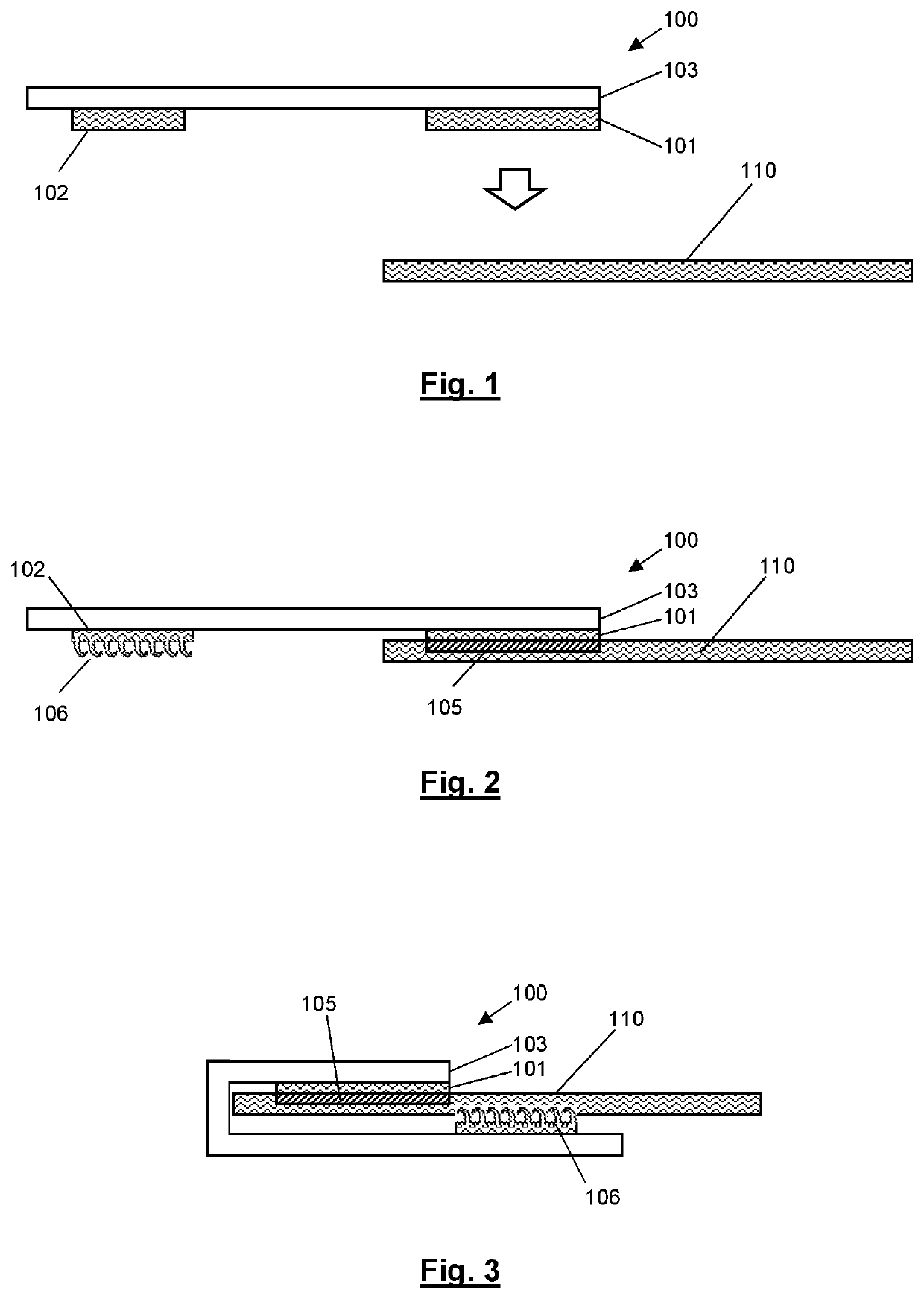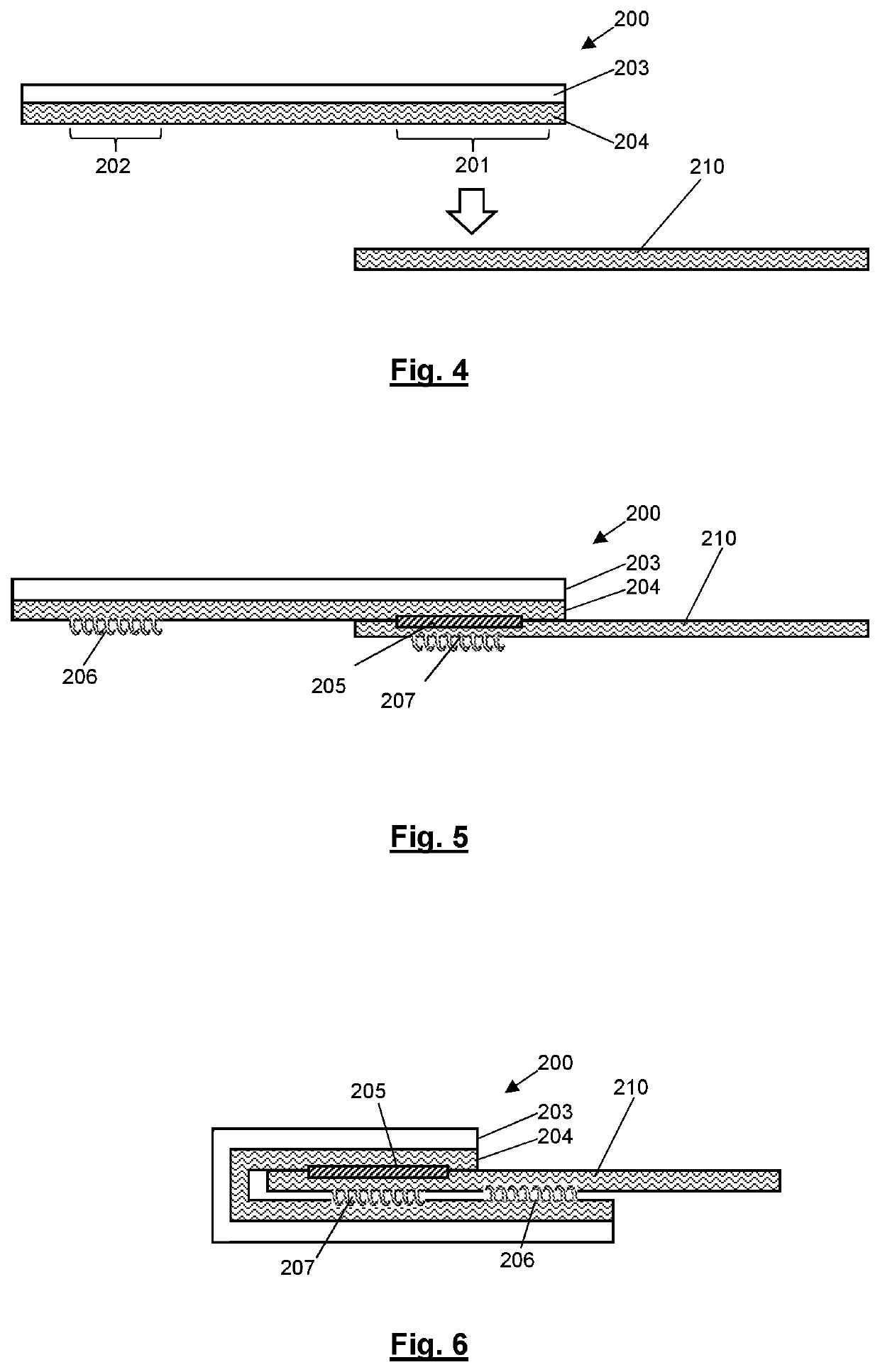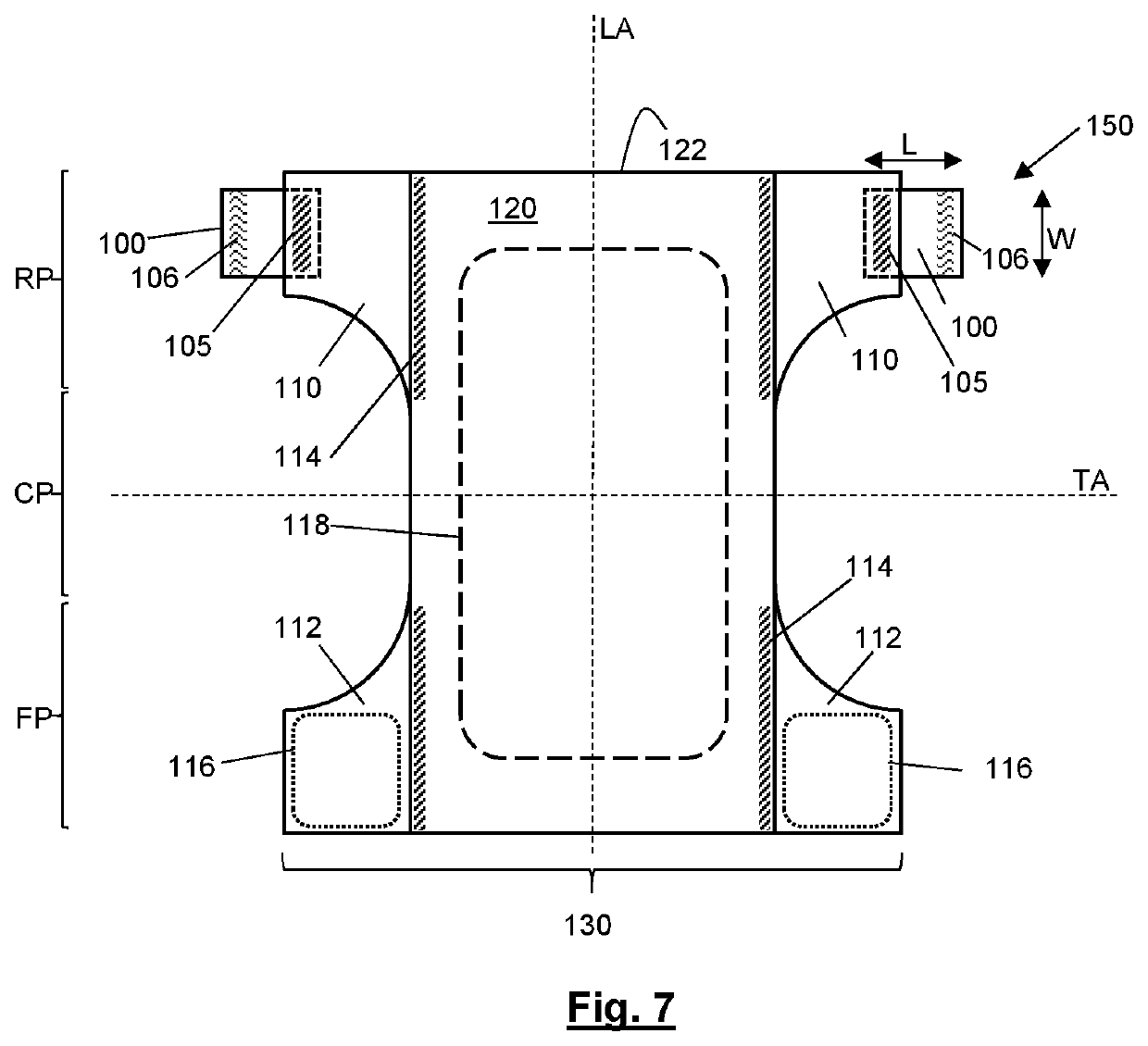Absorbent article and method of manufacturing same
a technology of absorbent articles and absorbent pads, applied in the field of absorbent articles, can solve the problems of undesirable use of adhesives, and achieve the effect of simple and more economical manufacturing
- Summary
- Abstract
- Description
- Claims
- Application Information
AI Technical Summary
Benefits of technology
Problems solved by technology
Method used
Image
Examples
first embodiment
[0057]the disclosure is described with reference to FIGS. 1-3.
[0058]FIG. 1 schematically shows an elongate tab 100, which may be a fastening tab of a diaper. Fastening tabs (see FIG. 7) typically have a length L between 40 and 75 mm and a width W between 20 and 50 mm. The tab 100 comprises a carrier layer 103 which carries a first portion 101 and a second portion 102 of a predetermined material, preferably the same material, deformable by means of an energy source, in particular ultrasonic vibrations. The first portion 101 is used for attachment to a layer 110 of the layered structure of the absorbent article. The second portion 102 is used to form hooks and obtain a fastening portion 106 of a hook-and-loop type fastener.
[0059]The attachment and the forming of the hooks may be economically performed in a single process step by use of the same energy source and result in process steps in which the use of adhesive is avoided. As shown in FIG. 1 by the arrow, the tab 100 is appropriate...
second embodiment
[0063]the disclosure is described with reference to FIGS. 4-6.
[0064]FIG. 4 schematically shows an elongate tab 200, which may be a fastening tab of a diaper. The tab 200 comprises a laminate of a film 203 and a nonwoven layer 204 of a predetermined material, deformable by means of an energy source, for example ultrasonic vibrations. A first portion or zone 201 of the layer 204 is used for attachment to a layer 210 of the layered structure of the absorbent article by forming a weld 205. A second portion or zone 202 of the layer 204 is used to form hooks and obtain a fastening portion 206 of a hook-and-loop type fastener. In this embodiment, further hooks 207 are also formed at the first portion 201.
[0065]The formation of the weld 205 and the hooks 206, 207 may be economically performed in a single process step by use of the same energy source and result in process steps in which the use of adhesive is avoided. As shown in FIG. 4 by the arrow, the tab 200 is appropriately positioned o...
third embodiment
[0091]the disclosure is described with reference to FIGS. 8-9, wherein the elongate tab 300 is a disposal tab, attached to an outer layer of the layered structure and provided for being wrapped around the absorbent article. A disposal tape is typically between 60 and 72 mm long in a Z-fold configuration. When unfolded the total length of the disposal tape may be about 100 to 200 mm. The width of a disposal tape is typically between 10 and 20 mm. Disposal tabs are typically attached to the backsheet of the diaper, for example in the middle of the rear body portion and oriented in longitudinal direction of the diaper, but it is evident that the disposal tab may be attached elsewhere on the article.
[0092]FIG. 8 shows the tab 300 before it is attached to the layer 310, which may be the backsheet of the article. The tab is formed by a single layer of nonwoven. Three zones are defined on the tab: a first zone or portion 301 at one end for forming a weld 305 for permanent attachment to the...
PUM
| Property | Measurement | Unit |
|---|---|---|
| width | aaaaa | aaaaa |
| width | aaaaa | aaaaa |
| width | aaaaa | aaaaa |
Abstract
Description
Claims
Application Information
 Login to View More
Login to View More - R&D
- Intellectual Property
- Life Sciences
- Materials
- Tech Scout
- Unparalleled Data Quality
- Higher Quality Content
- 60% Fewer Hallucinations
Browse by: Latest US Patents, China's latest patents, Technical Efficacy Thesaurus, Application Domain, Technology Topic, Popular Technical Reports.
© 2025 PatSnap. All rights reserved.Legal|Privacy policy|Modern Slavery Act Transparency Statement|Sitemap|About US| Contact US: help@patsnap.com



